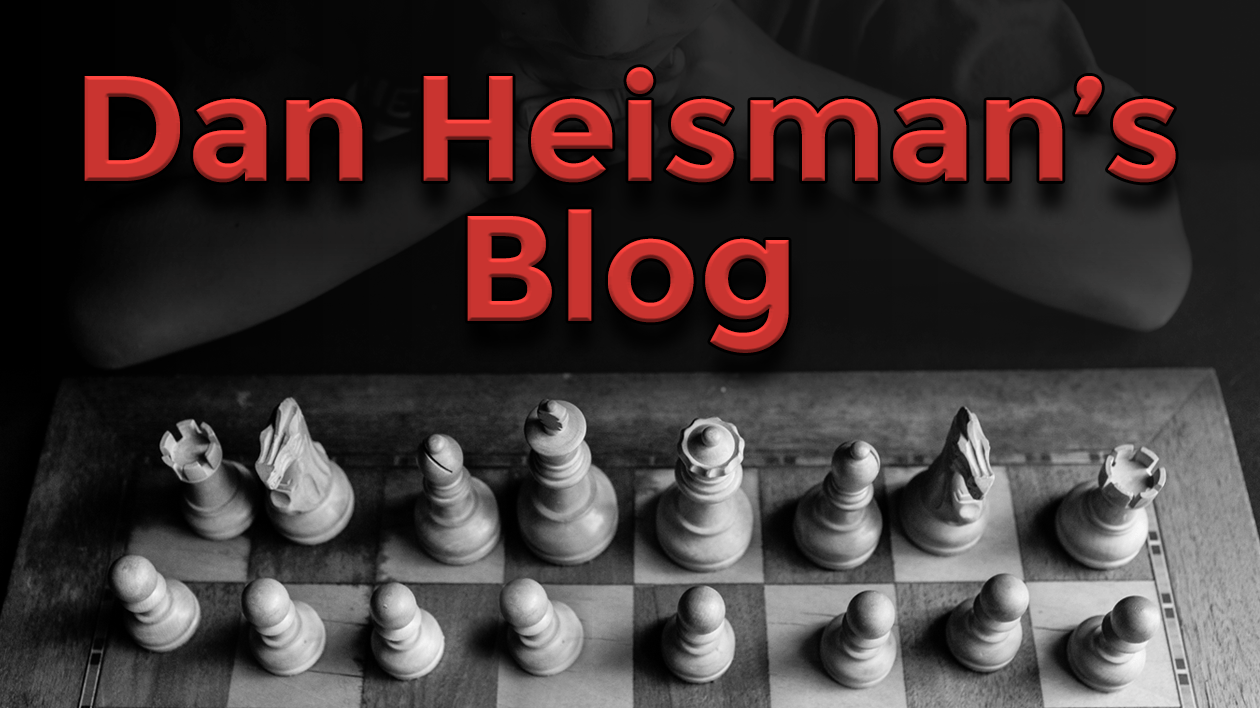
Checking for safety requires more than using tactical vision
Most amateur (U2200) tactical mistakes occur when the player makes an unsafe move. This occurs much more often then when a player "misses" an easy offensive tactic that could win material (which, in turn, must have been allowed by an opponent's unsafe previous move!). Yet the great majority of tactics books (with a notable exception of my "Is Your Move Safe?") deal 99% with showing the reader how to do something offensively: win material, checkmate, or get a draw from an otherwise inferior position. Teaching them how to determine when their own moves are safe is just as important, or more.
When one of my students makes a tactical mistake, it's my job as an instructor to try to find the cause of the mistake and help them minimize similar mistakes in the future. Often when asked, the student will reply "I did not see it", which actually has multiple possible interpretations.
One interpretation is that they played "Hope Chess", which I've defined as not considering the opponent's possible checks, captures, and threats on the next move, to see if all of these can be safely met.
However, it turns out that there are two major types of Hope Chess.
The first is that they made the move and simply did not consider the issue of whether the opponent might have a tactic on his reply. This is the egregious form of Hope Chess, and practiced mostly by lower rated players (at least in slow games).
The second type of Hope Chess is actually more common among intermediate players (again, assuming a slow game where they have time). In this second type a player DOES check for the safety of a move but, instead of using analysis (augmented by their tactical vision), they only use their tactical vision to see if there is any danger. If they don't see danger, then they assume there isn't any and that the move is safe.
The problem with only using tactical vision to determine your move's safety is that there are plenty of easy tactics which you (and many intermediates) might not recognize. And if the opponent is presented with the opportunity, they may indeed recognize such a tactic or, more likely, stumble across it in their analysis of the move.
Here's an example I've frequently used to illustrate this point. In the following game I was Black against a 1500 player in a club game, and I had misplayed the opening:
In this position White is much better and can maintain his advantage with the natural 12.0-0. Instead, he did what many amateurs do and played the opening like the middlegame with the "aggressive-looking" 12.Ne5. I am sure his tactical vision told him that this move was safe: the knight is guarded as many times as it is attacked and, as a bonus, I can't play 12...Nxe5?? due to 13.dxe5 winning a piece.
Let me quote "Is Your Move Safe" as to what happened:
"But as soon as White played it, I asked the question “Is it safe?” and almost immediately suspected it was not. Analysis (always the necessity) proved me correct:
Obviously Black cannot play 12...Nxe5?? 13.dxe5 forking the bishop and knight and winning a piece. So the main try is 12...Bxe5 and now White has two ways to capture, both insufficient:
- 13.Bxe5 Nxe5 14.dxe5 Ng4 was played in the game. The e-pawn cannot be saved as 15.f4 hangs the e-pawn to both the queen and knight, and
- 13.fxe5 when Black has two ways to try to gain the advantage. The better move is 13...Nh5! to remove the guard on e5. Then if 14.Bf4 (else 14...Nxg3 and 15...Nxe5) Black has 14...d4! undermining White’s center. 14...Nc5 and 14...g5 are also possible. On the 13th move Black’s other try 13...Ng4?! is not as good, as White can sacrifice the e-pawn with compensation with 14.O-O Nxe5 15.Be2! with approximately equal chances.
So 12.Ne5 is not safe."
This therefore turns out to be an excellent example of an amateur making a move that "looks safe" but, under careful analysis (but certainly not requiring a computer) turns out not to be safe.
I see this type of error a few times a week, so I thought I would write this blog to make all players more aware: if you want to see if your move is safe, using only your "tactical vision" from your mental database is helpful and even necessary, but it's not sufficient for determining safety. Your tactical vision should augment careful analysis.